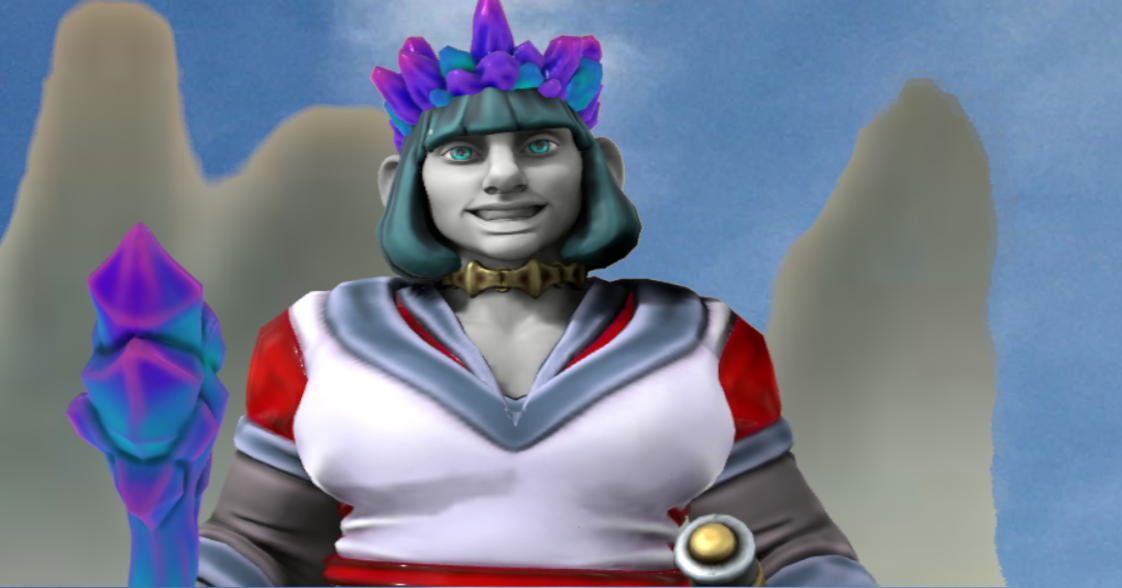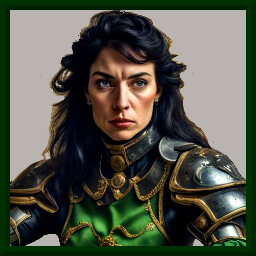Through the folds and shifting patterns within the Rift, a thinny formed between the Place Before and Gruthe. Through this thinning of the barriers between worlds, did come the il-Orah.

The History of Gruthai
In the Qh'Raa language group, the concept of the world is largely conflated with the history of the central continent, Gruthe, albeit writ large. Hence Gruthai—"the Great Gruthe"—is conflated with the world more commonly (universally) known as PÈRYL. This timeline is of the central continent and its immediate environs. It begins more than 10,000 years before the present.
The latest year known is 3000 of the Qh'énnish Ascension.
Previous to the Qh'énnish Ascension
10000 PA 0 PA
This is deep in the past, at the very dawn of civilization, up until the complex societies of the current era.
-
 The Dwarven Conquest
The Dwarven ConquestArrival of the il-Orah
Population Migration / TravelLocation
Sarn -
Circa 9000 PA, likely summer in the mountains of Northwestern Gruthe.
The Birth of Bhvarius Kharnne
Life, BirthThe Dragon, Bhvarius and her four sisters are hatched as wyrm-dragon hybrids to the Wyrm U Gīzzan and the Dragon U Khshiarūs in the region of what would become known as Kharnne/Qanné.
-
 Circa 890 PA - 790 PA
Circa 890 PA - 790 PAThe Dwarven Kingdoms Period
Population Migration / Travel
(Circa 7640-7770 of the Òrennéii calendar)
Also known as the Five Regions Period, this vast swath of time was dominate by the dwarven and goblin tribes. Humans were tiny populations of nomads. The trolls of the Black Isles were a powerful, yet minor faction, who arrived late in this period. The naga were also itinerant and not significant powers. Gruthe was divided into five main regions. The northern part of the continent was held by Laohor (later known as the Illaohéin). Eastern Gruthe was divided in two, in the northern half of the East was Rheddor (Rheddaitéin southeastern Gruthe was held by dragons centred around the sacred mount Flamingrock (Suvata) and a goblin holding calle Chi. Southern Gruthe was lightly populated by the nomadic Mỳdria. The west was also divided by two factions, with the southern nation of DaoSvor (Svoréin), and to the north of DaoSvor was Crahn of the Òrennéii. Near the end of this period, the Tlatlochans—emigrants from Xitzol—came to Gruthe. This became known as "the Yssian Landing" and occurred in the southernmost regions of Gruthe, circa 820-800 PA (7710-7730 Ò). The Tlatlochans were the ancestors of the Yssians. Although it was, more accurately the "Tlatlochan landing," the name "Yssian Landing," is used retroactively because it was Yssian historians who first documented the events. -
Circa 500 PA: the Three Kingdoms Era
The Three Kingdoms
Era beginning/end
After the collapse of the Dwarven States, daoSvor, Aricc, Crahn, Laohor, and Rheddor, the human settlers of Gruthe rose to prominence in three immigrant populations. From Tcha in the West, were the *Gzīel peoples who would become the Qhélssénnish and Kharnnish; from Ptarro in the East, came the Ptarshishin; and from Xitzol in the South, came the Tlatotlys. A relatively easy peace was drafted between the three colonial powers given the vast spaces that separated them. The era named for this division of the continent was called the Three Kingdoms.
Species
Human -
Circa 290-200 PA
The Plague Years
Plague / EpidemicThe Age of the Òrennéii ends. After the Fall of Crahn at Aricc-nor, plague struck the remaining Òrenéii tribes as well as their enemies the Eun Chi and Eunu. Hundreds of thousands die. Eun Chi as a nation, never recovers. The Eun become nomadic like their Eunu cousins. The Mỳdrians, Qh'énns, Kharnnes, and other Human tribes also succumbed, though not to the rates of the other races. Immune to the plague, the BkBrchn, briefly dominate the north-central regions of Gruthe.
The Qh'énnish Ascension
1 QA and beyond
The standard starting point of the contemporary era, was the unification of the colonial Yssians and the autochthonous Qh'énns in the founding of the Callessai Empire, and its central city-state Cāllenriter.
-
408 QA
1 Mauchaistir409 QA
1 Bachrir
The Weird of Port Hren
Disaster / DestructionThe mayor of the tertiary port city of Hœm, Tchez Tchezzur died suddenly after a long period of relative peace and tranquility. A snap election for his successor was called and the eventual winner was the youngest scion of House Rahet, Gainrahet, an Illaohhéin foundling adopted by the house. The ensuing political uncertainty was compounded by a series of external political and localized weather phenomena: the on-going conflict between the two great Gruthen powers the Qh'énns and Ptarshakkians; summer drought followed by autumn and winter flooding, ice storms, and sinkholes caused by the flooding.
Location
Port Hren -
The Third Qh'énno-Ptarshakkian War
Third Ptarshakkian-Qh'énnish War
Military: WarThe most decisive win for Ptarshakk which lead to the capture of Qh'énnish lands and the establishment of the Ptien Midar colony and the permanent presence of Ptarshakk on Western Gruthe. The skillful strategy of Field Marshal Biwas ab'Daenae led to this victory, unfortunately, she was assassinated before seeing her plans completed. The Mỳdri Channel Islands, Sarn and Garnère; Qh'énnish cities Port Mỳdr and Mara, and all the surrounding Qh’énnish holdings, fell to Ptarshakk. Collectively renamed Ptien Midar ("War port of the Mỳdr") and made the thirteenth province of the Ptarshakkian Empire. It is believed Ptarshakk’s success is owed at least initially to their allegiance with the separatist Mỳdrians, The Daukbr. The first provincial governor of Ptien Midar was Captain Usmaj ab’Amma of the Fourth Order of the Grand Army of the Ptarshakkian Empire.
PÈRYL is a reflection of the visions of 包, Caestus, 이성준, and Jonn Redd.
Any mistakes are theirs with apologies to the denizens of PÈRYL and/or the Rift.


